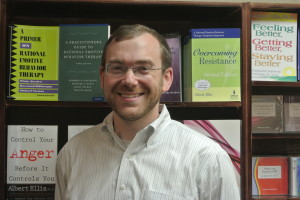by Mark Schiffman, M.S.
Inside Out has earned critical acclaim, as well as success at the box office, amassing over $600,000,000 worldwide. For the few who haven’t seen it, the story centers on Riley, an eleven year old girl whose family moves from Minnesota to San Francisco. The primary setting for the movie is inside of Riley’s head and the main characters of the story are five of Riley’s emotions: Joy, Sadness, Anger, Fear, and Disgust. After the move to San Francisco, Sadness begins to take a more active role in “coloring” Riley’s consciousness and memories. Joy, the leader of the emotions, tries to limit Sadness’s impact on Riley.
Joy’s motives parallel the general milieu of Western culture to look down on the emotion of sadness and try to avoid this “negative” emotion. Emotional theorists argue that this is because sadness indicates a lack of personal mastery and places demands on others to help or show empathy, which run counter to the underpinnings of an individualistic society. Yet, it is exactly for these reasons that sadness is such a useful emotion. Sadness can motivate a person to increase self-focus and review personal priorities, as well as strengthen social bonds (see Power and Dalgleish, 2007, p. 224).
In the movie, as a result of Joy’s attempts to silence Sadness ,the two accidentally get propelled in to the recesses’ of Riley’s brain and begin a voyage back to the emotional control center. Through the (very creative, humorous, and moving) trials of this journey, Joy comes to realize the upside that Sadness has on Riley’s well-being, specifically her ability to trigger empathy in others and increase the social bond of the family.
Clients often come into therapy with Joy’s original biases against sadness. “I am depressed,” the client says. “Well how would you like to feel instead?” the therapist will ask. “Happy.” Life has many challenges. In Riley’s story it includes moving from one city to another. In someone else’s story it could include getting rejected by a proposed date, getting fired from a job, or going through a divorce. In most of these cases it would be emotionally inappropriate for someone to feel happiness as a response to these challenges. In REBT, if someone feels depressed, the targeted replacement emotion is not happiness, but rather, sadness. Sadness is nothing to be afraid of and nothing to be ashamed of. It is a healthy, functional and adaptive emotion to experience when we are confronted with many of life’s stressors. So next time we feel like avoiding sadness, take it from Joy and embrace the positive impact it has on our lives.

